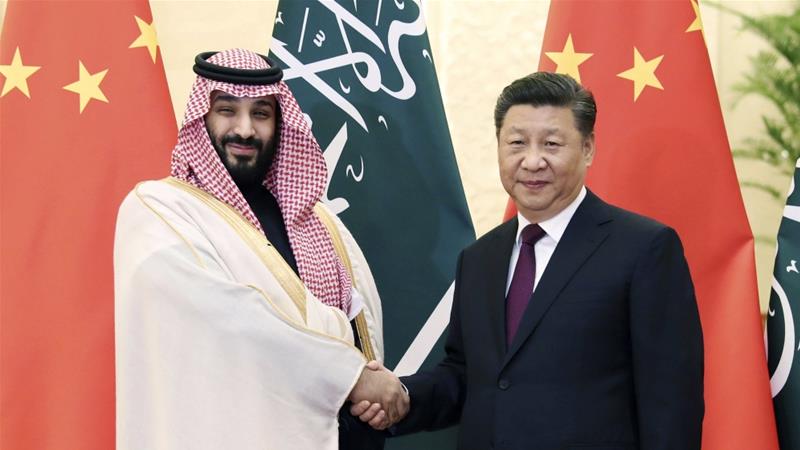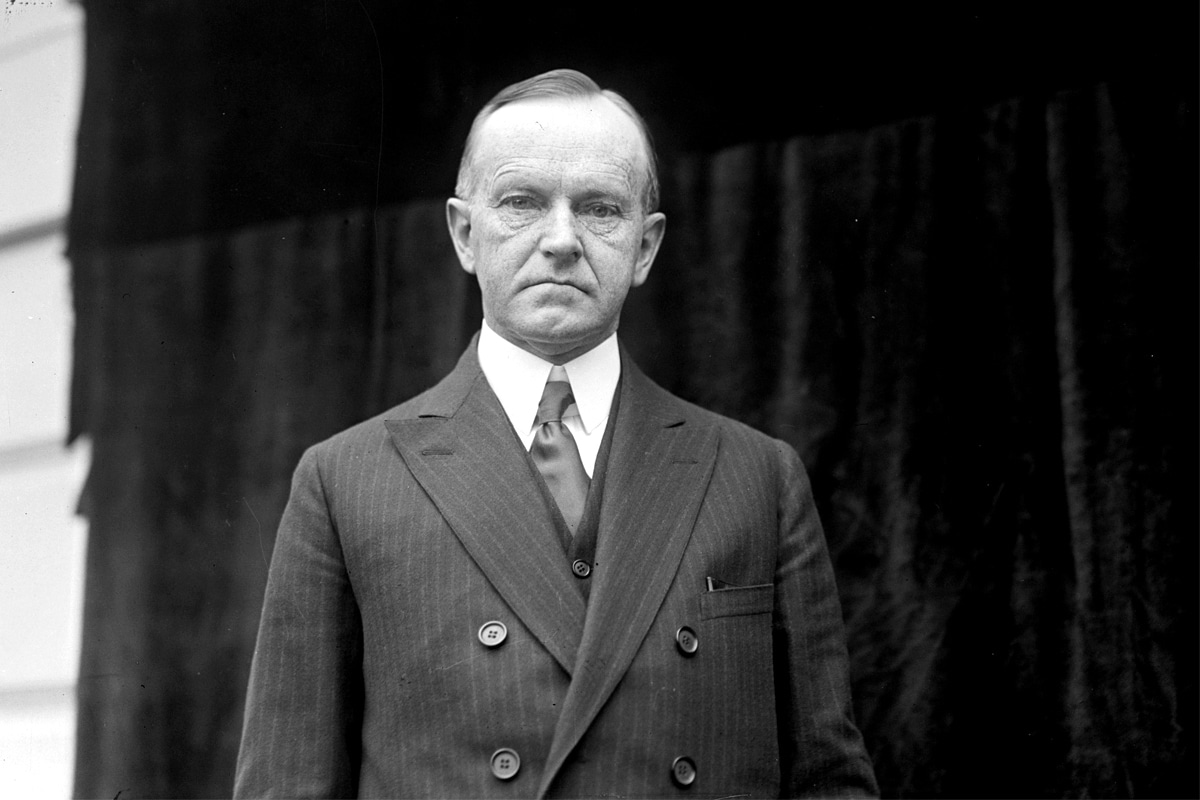Last month there was extensive media coverage about the still classified 28 pages of an intelligence report that reputedly establishes Saudi support for the 9/11 attack. One of the report’s co-authors is a retired Democratic Party Senator from Florida named Bob Graham who has been fighting to get the pages released. His efforts dovetail with the legal action mounted by the families of 9/11 victims to force Saudi Arabia to pay damages.
The FBI has denied any such connection, something that Graham views as a virtual cover-up since according to him the agency suppressed the results of an investigation of a Saudi family in Sarasota, Florida that revealed multiple contacts between it and the hijackers training nearby until the family fled just before 9/11.
For a number of years, this type of claim has been made by Zacarias Moussaoui, a self-described but unlikely member of the 9/11 conspiracy who is serving 6 concurrent life sentences. In an article on Graham, the NY Times refers to Moussaoui’s concurrence with Graham but without providing crucial background that might shed light on his credibility—or incredibility more accurately. In his trial, he claimed that he and shoe-bomber Richard Reid were supposed to fly an airliner into the White House on 9/11 but then later testified that he had no role in the 9/11 attacks. He said that he was being held in reserve for a future attack. Since he flunked out of flight school and was regarded by 9/11 mastermind Khalid Sheikh Mohammed as unreliable, it doubtful that he ever had any role to play. Psychiatrists testifying for the defense concluded that he was paranoid schizophrenic, a diagnosis that jibes with his complaint that his lawyers were plotting to kill him.
In a story about the 28 pages on CBS’s Sixty Minutes, Tim Roemer, a former Democratic Congressman from Indiana, took part in a joint interview with Graham. For the two ex-pols, the connections between Saudi government officials living in the USA and 9/11 hijackers was undeniable:
During their first days in L.A., witnesses place the two future hijackers at the King Fahd mosque in the company of Fahad al-Thumairy, a diplomat at the Saudi consulate known to hold extremist views. Later, 9/11 investigators would find him deceptive and suspicious and in 2003, he would be denied reentry to the United States for having suspected ties to terrorist activity.
Tim Roemer: This is a very interesting person in the whole 9/11 episode of who might’ve helped whom– in Los Angeles and San Diego, with two terrorists who didn’t know their way around.
Phone records show that Thumairy was also in regular contact with this man: Omar al-Bayoumi, a mysterious Saudi who became the hijackers biggest benefactor. He was a ghost employee with a no-show job at a Saudi aviation contractor outside Los Angeles while drawing a paycheck from the Saudi government.
Steve Kroft: You believe Bayoumi was a Saudi agent?
Bob Graham: Yes, and–
Steve Kroft: What makes you believe that?
Bob Graham: –well, for one thing, he’d been listed even before 9/11 in FBI files as being a Saudi agent.
On the morning of February 1, 2000, Bayoumi went to the office of the Saudi consulate where Thumairy worked. He then proceeded to have lunch at a Middle Eastern restaurant on Venice Boulevard where he later claimed he just happened to make the acquaintance of the two future hijackers.
Tim Roemer: Hazmi and Mihdhar magically run into Bayoumi in a restaurant that Bayoumi claims is a coincidence and in one of the biggest cities in the United States.
Steve Kroft: And he decides to befriend them.
Tim Roemer: He decides to not only befriend them but then to help them move to San Diego and get residence.
In San Diego, Bayoumi found them a place to live in his own apartment complex, advanced them the security deposit and cosigned the lease. He even threw them a party and introduced them to other Muslims who would help the hijackers obtain government IDs and enroll in English classes and flight schools. There’s no evidence that Bayoumi or Thumairy knew what the future hijackers were up to, and it is possible that they were just trying to help fellow Muslims.
For some on the left, allegations of Saudi state-level participation in 9/11 serves as another brick in the foundation to support the notion not only of Saudi Arabia being bent on the destruction of the cornerstones of American imperialism—the WTC and the Pentagon—but American complicity in what amounts to a willful act of self-immolation. You can count on the WSWS.org to make such an argument in an article on Bob Graham:
Graham’s language is significant, since it could suggest not only official Saudi support to the hijackers during their months in the US—the focus of the “60 Minutes” report—but support to the hijackers by other individuals or other agencies, including the US government itself. It was reported after 9/11 that the lead hijacker, Mohammed Atta, was well known to the US government, and had been under surveillance during his residence in Germany before he came to the United States to get flight training.
Two other hijackers, the San Diego-based Nawaf al-Hazmi and Khalid al-Mihdhar, were also known to the US government. The CIA had observed them participating in an al Qaeda planning meeting in 2000 in Kuala Lumpur, Malaysia and placed them on a “watch list” for FBI monitoring if they came to the United States. Nonetheless, under circumstances that have never been clarified, the two men were allowed to enter the United States on January 15, 2000, landing at Los Angeles International Airport, eventually going to San Diego where they attended flight training school, preparing for their role as pilots of hijacked planes on September 11, 2001.
The distance between this analysis and that of the 9/11 Truther movement can be measured in millimeters. If the USA connived to open doors for men bent on its destruction, why wouldn’t it send in operatives to prepare a planned detonation of the twin towers or fire a missile at the Pentagon? If the ruling class was so desperate to launch a new war in the Middle East based on a “false flag”, why not?
The guilt of the Saudi government has been accepted by much of the conspiracy-minded left for obvious reasons. Osama bin-Laden admitted he was behind it and 15 out of the 19 hijackers were from Saudi Arabia just like him. Isn’t that proof enough? As so many guests on the Bill Maher or Jon Stewart show used to put it, we should have invaded Saudi Arabia rather than Iraq.
If you buy into this, it is probably a good idea to gloss over the long-standing relationship between the ruling class of the USA and the Saudi royal family. Saudi Arabia has been staunchly opposed to radical movements in the Middle East and supportive of stability in the West, where much of its oil wealth was invested. It supported the first Gulf War and has provided an open door to the construction of American military bases. In 2010 the USA signed a 60 billion dollar arms deal with Saudi Arabia, not exactly consistent with reports that they might be used to destroy American assets both economic and personal.
In fact, it makes no sense at all, especially in light of al Qaeda’s hostility to the monarchy. Indeed, one of the reasons bin-Laden gave for the 9/11 attack was the presence of American troops on the land where Muhammad was born.
But an alternative interpretation begins to make sense if you look beneath the surface. Bin-Laden and the 15 hijackers might have been Saudi but their roots were in the Yemeni tribe that has been brutally oppressed by the Saudi monarchy since the early 20th century.
The Arabian Peninsula was home to two major tribes historically, the Adnan who lived in the north and became the rulers of contemporary Saudi Arabia, and the Qahtani who dwelled in the south and are now referred to as Yemenis. Bin-Laden was a Qahtani descendant as were every single one of the Saudi hijackers. Furthermore, most of the initial cadre of al Qaeda were Yemenis from the Asir region of Saudi Arabia that borders Yemen and was Qahtani homeland. Like Texas, this was a piece of foreign territory that a more powerful nationality was able to conquer and absorb.
If you have trouble with the word tribe, it is simply a synonym for the more anthropologically precise “segmentary lineage” term that is defined in Wikipedia as:
A simple, non-anthropologist’s explanation is that the close family is the smallest and closest segment, and will generally stand with each other. That family is also a part of a larger segment of more distant cousins and their families, who will stand with each other when attacked by outsiders. They are then part of larger segments with the same characteristics. Basically, if there is a conflict between brothers, it will be settled among all the brothers, and cousins will not take sides. If the conflict is between cousins, then brothers on one side will align against brothers on the other side. However, if the conflict is between a member of a tribe and a non-member, then the entire tribe including distant cousins could mobilize against the outsider and his or her allies. This tiered mobilization is traditionally expressed e.g. in the Bedouin saying: “Me and my brothers against my cousins, me and my cousins against the world.”
In 1906 the Asiris formed a state under the leadership of Muhammad al-Idrisi, the great-grandson of a revered Sufi scholar known for his skillful debates against Wahhabists from the north. Following the collapse of the Ottoman Empire in the aftermath of WWI, al-Idrisi cast his lot with the British who he hoped could guarantee the sovereignty of his people. Instead the British chose alignment with Saudi Arabia that had became a state in 1932. Did this have something to do with the fact that the north had oil and the south virtually none? Do I have to ask?
Deciding that Asir must become part of Saudi Arabia, its monarch Ibn Saud went to war and was victorious. Some historians believe that as many as 400,000 Asiris and other tribesmen died as a result of Ibn Saud’s onslaught.
Once the Asiris were brought under Riyadh’s thumb, a process of forced assimilation took place with Wahhabi beliefs being forced down the throats of people whose customs could not be more remote from the austere but mammon-worshipping norms of the north. Qahtani tribesmen wore garments that amounted to skirts, revealing much of their legs. They were known as the “flower men” and frankly could pass for people walking around Haight-Ashbury in 1969.

As for the women, they liked to dress in colorful clothes and shunned the veil. Their elaborate headdresses were customarily bedecked with coins and jewelry.
To consolidate its grip on a people that obviously resented being forced into the Wahhabist mold, the Saudis constructed Highway 15 that would be the backbone of an economic-military presence in its newly acquired territory. It would have air bases, missile sites and garrison outposts just like the Alamo. Guess who got the job of building Highway 15. Osama bin-Laden’s father. That project and others in Saudi Arabia generated billions for the family but did little to mollify his son. Even though the Asiris appeared to have been reengineered as Wahhabi robots, they harbored resentment against American presence in the region as well as the ostentation of the Saudi ruling class. From its inception, the Qahtani tribe had preferred a simple life and tribal camaraderie. Bin-Laden might not have had flowers in his hair but there were aspects of Saudi society he found deeply objectionable, in fact far more irritating than the reputed “Western” values like Madonna videos he supposedly reviled.
In order to understand the clash between the Asiris and the royal family, as well as to help debunk the outlandish claim that top Saudi government officials were involved with 9/11, you have to read Akbar Ahmad’s “The Thistle and the Drone” that I reviewed for Critical Muslim two years ago. Ahmad lays out the social divide between the descendants of the Adnan and the Qahtani:
Muhammad [bin-Laden] had come to feel at home in Asir. He loved its tribes, its ways, its history, and its cultural ambiance. One of his favorite wives was from Asir. In turn, the tribes of Asir accepted Muhammad as one of their own. Not only was he a fellow Yemeni, but they were won over by his easy charm as he held court sitting in a large white canvas tent with brightly colored cushions and carpets covering the floor. Muhammad received tribesmen who would petition him to settle disputes or for other assistance. He had become more than a mere construction worker. He had become their sheikh. The tribes would respond with loyalty when Muhammad’s son Osama would come to them for support. Twelve of the 9/11 hijackers were from towns along Highway 15.
While the oil boom made the Saudi royal family and its supporters very rich, little was done for the people of Asir. The large, extravagantly built holiday villas owned by the Saudi elite in Asir seemed to add nothing but salt to their wounds. In 1980 the poverty-stricken province had only 535 hospital beds for a population of about 700,000. Besides, given their religious background and its emphasis on austerity, the Yemenis disapproved of the Saudis’ arrogance and vulgar displays of wealth. Poor Yemeni tribesmen desperate for work looked for jobs in the Saudi cities. Typically, they could only find employment in the military or as cooks, gardeners, or drivers. After the kingdom began to invite immigrant workers from the Philippines and India, the Yemenis could not even obtain those menial positions. Their resentment against the Saudi centers of power remained a constant undercurrent of Asir society.
Eventually the grievances against the ruling family reached a critical mass and led to open revolts. A cleric from Asir named Juhayman al-Otaybi led the seizure of the Grand Mosque in Mecca in December-January 1979 that was directed both against infidelity to Islam and the worship of riches in the country’s top echelons.
Finally, despite the emphasis on radical Islam versus the civilized world, a more plausible explanation for the violent clashes taking place around the world is not that different from that between tribes and civilization more generally. Indeed, Islam does not have to enter the picture as the British conquest of Ireland might indicate.
For Osama bin-Laden, the loyalty to Qahtani values might trump his Wahhabi beliefs. Indeed, if you take a close look at his statements around 9/11, there is a tribal element that stands out as Murad Batal al-Shishani pointed out in a March 4, 2010 Jamestown Foundation article:
A focus on tribes in Yemen has been a main reason behind al-Qaeda’s success in finding a safe haven there. Abu Musab al-Suri, the first to see Yemen’s potential as a safe haven for the jihadist movement, has said that the main reason for considering Yemen a stronghold for jihadis is the tribal nature of its people and the solidarity between tribes. [3]. It was for similar reasons that Osama bin Laden addressed the southern tribes of Saudi Arabia in 2004, specifically in Asir province (which borders Yemen), naming the tribes and encouraging them to fight in Iraq. “Oh heroes of Asir and champions of Hashed, Madhaj, and Bakeel, do not stop your supplies to assist your brothers in the land of Mesopotamia [i.e. Iraq]. The war there is still raging and its fire spreading.” [4]
Abdul-Ilah al-Sha’e, a Yemeni journalist, confirms that al-Qaeda has succeeded in building an alliance with the tribal system in Yemen because the country has not been “tamed” or “civilized” like other countries. Tribes are still in control and thus it was easy to build alliances with them. [5] Abdul-Illah said that al-Qaeda wanted to recruit young people who were not afraid of death and found these young people in Yemen’s tribal and Bedouin societies, where acts of revenge and battles between tribes are still dominant, given the absence of state institutions (al-Jazeera.net, January 21).









